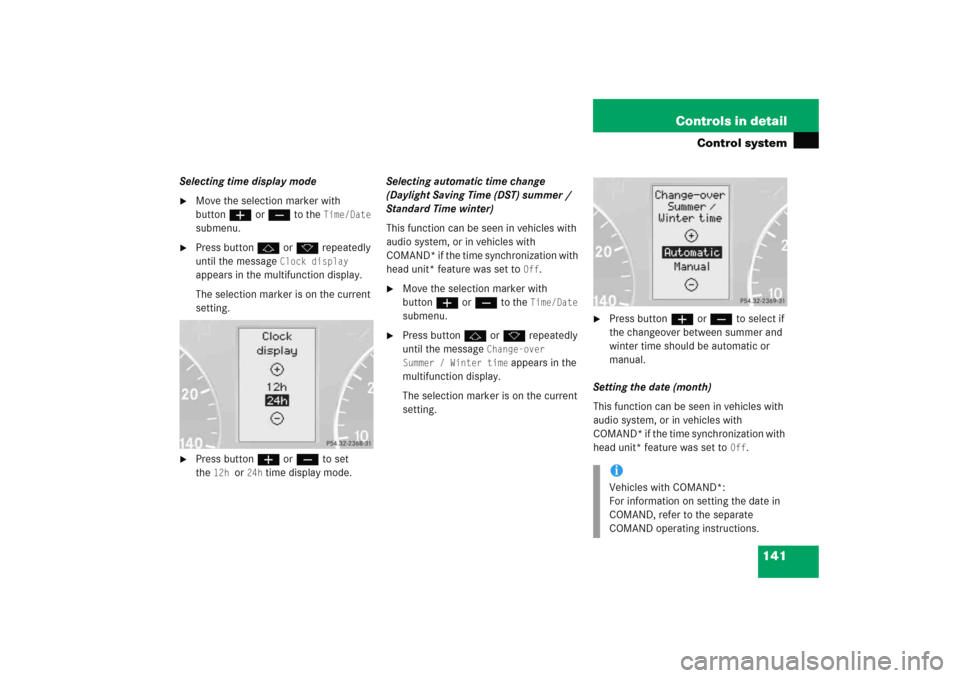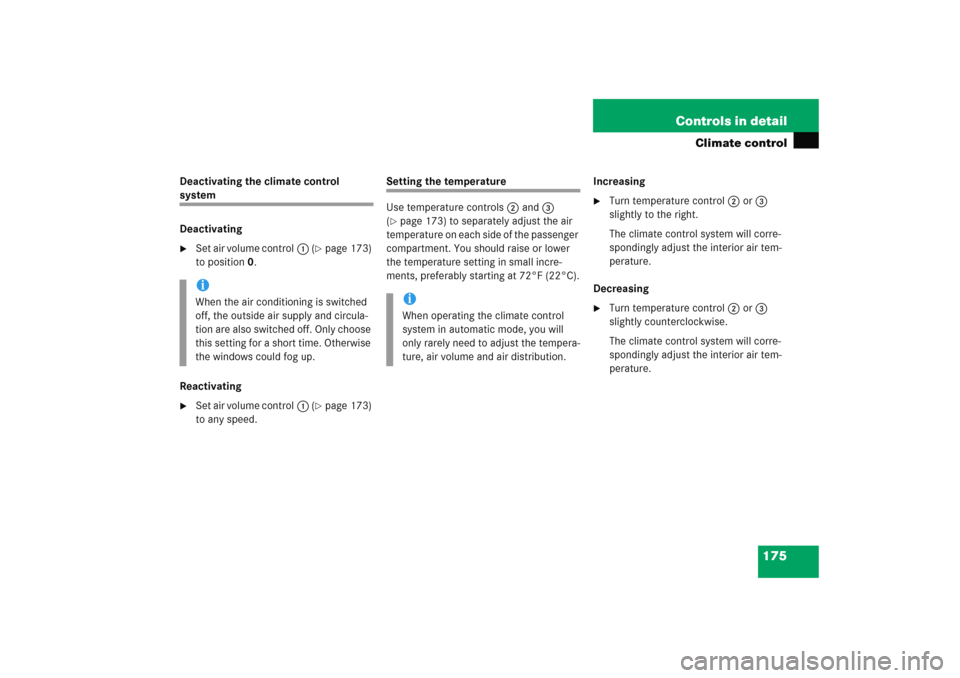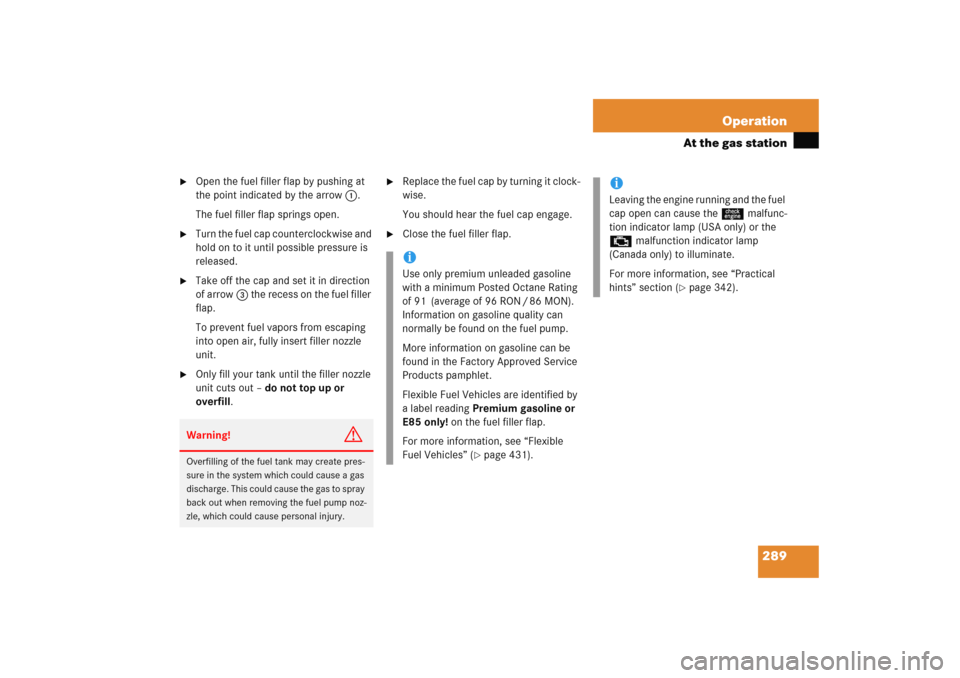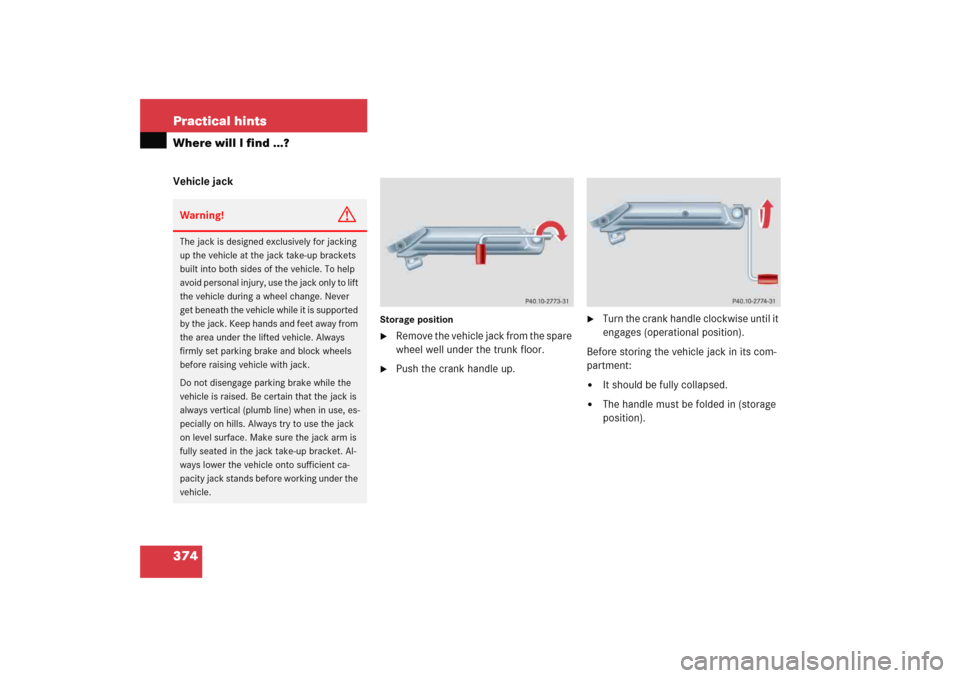Page 26 of 474

25 At a glance
Instrument cluster
Item
Page
1
Speedometer with:vElectronic Stability
Program (ESP)
warning lamp
83
343
;Brake warning lamp,
USA only
50
56
341
3Brake warning lamp,
Canada only
50
56
341
BLow beam headlamp
indicator lamp
51
110
2
LLeft turn signal
indicator lamp
52
3
Multifunction display with:Trip odometer
121
Main odometer
123
Gear selector lever position
49
162
Item
Page
Program mode
164
Status indicator
(outside temperature/ digital
speedometer)
121
138
Digital clock
123
139
4
KRight turn signal
indicator lamp
52
5
Tachometer with:-Antilock Brake
System (ABS)
indicator lamp
81
340
66
344
1Supplemental
restraint system
indicator lamp
60
344
AHigh beam headlamp
indicator lamp
51
114
Item
Page
úEngine malfunction
indicator lamp,
USA only
342
±Engine malfunction
indicator lamp,
Canada only
342
6
Fuel gauge with:Fuel reserve warning lamp
344
4Fuel filler cap location
indicator: The fuel
filler cap is on the rear
right-hand side.
7
Coolant temperature gauge
120
8
Reset button for:�
Resetting trip odometer
121
�
Resetting individual
settings
135
�
Instrument cluster
illumination
119
Page 120 of 474

119 Controls in detail
Instrument cluster
�Instrument cluster
For a full view illustration of the instrument
cluster, see “At a glance” (
�page 24).
1Reset button
The instrument cluster is activated when
you
�
open a door
�
switch on the ignition (
�page 33)
�
press reset button1
�
switch on the exterior lamps
You can change the instrument cluster
settings in the instrument cluster submenu
of the control system (
�page 137).
Instrument cluster illumination
Use reset button1 to adjust the
illumination brightness for the instrument
cluster.To brighten illumination
�
Turn reset button1 clockwise.
The instrument cluster illumination will
brighten.
To dim illumination
�
Turn reset button1 counterclock-
wise.
The instrument cluster illumination will
dim.
iThe instrument cluster illumination is
dimmed or brightened automatically to
suit ambient light conditions.
The instrument cluster illumination will
also be adjusted automatically when
you switch on the vehicle’s exterior
lamps.
Page 124 of 474

123 Controls in detail
Control system
�Control system
The control system is activated as soon as
the SmartKey in the starter switch is
turned to position1. The control system
enables you to�
call up information about your vehicle
�
change vehicle settings
For example, you can use the control
system to find out when your vehicle is
next due for service, to set the language
for messages in the instrument cluster
display, and much more.
The control system relays information to
the multifunction display.
Multifunction display
1Trip odometer
2Main odometer
3Current program mode (automatic
transmission*)
4Current gear selector lever
position/gear range (automatic trans-
mission*)
5Digital clock
6Status indicator (outside tempera-
ture/digital speedometer)
iThe displays for the audio systems
(radio and CD player) will appear in
English, regardless of the language
selected.
Warning!
G
A driver’s attention to the road and traffic
conditions must always be his/her primary
focus when driving.
For your safety and the safety of others,
selecting features through the multifunction
steering wheel should only be done by the
driver when traffic and road conditions
permit it to be done safely.
Bear in mind that at a speed of just 30 mph
(approximately 50 km/h), your vehicle is
covering a distance of 44 feet
(approximately 14 m) every second.
Page 142 of 474

141 Controls in detail
Control system
Selecting time display mode�
Move the selection marker with
buttonæ orç to the
Time/Date
submenu.
�
Press buttonj ork repeatedly
until the message
Clock display
appears in the multifunction display.
The selection marker is on the current
setting.
�
Press buttonæ orç to set
the
12h
or
24h
time display mode.Selecting automatic time change
(Daylight Saving Time (DST) summer /
Standard Time winter)
This function can be seen in vehicles with
audio system, or in vehicles with
COMAND* if the time synchronization with
head unit* feature was set to
Off
.
�
Move the selection marker with
buttonæ orç to the
Time/Date
submenu.
�
Press buttonj ork repeatedly
until the message
Change-over
Summer / Winter time
appears in the
multifunction display.
The selection marker is on the current
setting.
�
Press buttonæ orç to select if
the changeover between summer and
winter time should be automatic or
manual.
Setting the date (month)
This function can be seen in vehicles with
audio system, or in vehicles with
COMAND* if the time synchronization with
head unit* feature was set to
Off
.
iVehicles with COMAND*:
For information on setting the date in
COMAND, refer to the separate
COMAND operating instructions.
Page 176 of 474

175 Controls in detail
Climate control
Deactivating the climate control system
Deactivating�
Set air volume control1 (
�page 173)
to position0.
Reactivating
�
Set air volume control1 (
�page 173)
to any speed.
Setting the temperature
Use temperature controls2 and3
(�page 173) to separately adjust the air
temperature on each side of the passenger
compartment. You should raise or lower
the temperature setting in small incre-
ments, preferably starting at 72°F (22°C).Increasing
�
Turn temperature control2 or3
slightly to the right.
The climate control system will corre-
spondingly adjust the interior air tem-
perature.
Decreasing
�
Turn temperature control2 or3
slightly counterclockwise.
The climate control system will corre-
spondingly adjust the interior air tem-
perature.
iWhen the air conditioning is switched
off, the outside air supply and circula-
tion are also switched off. Only choose
this setting for a short time. Otherwise
the windows could fog up.
iWhen operating the climate control
system in automatic mode, you will
only rarely need to adjust the tempera-
ture, air volume and air distribution.
Page 290 of 474

289 Operation
At the gas station
�
Open the fuel filler flap by pushing at
the point indicated by the arrow1.
The fuel filler flap springs open.
�
Turn the fuel cap counterclockwise and
hold on to it until possible pressure is
released.
�
Take off the cap and set it in direction
of arrow3 the recess on the fuel filler
flap.
To prevent fuel vapors from escaping
into open air, fully insert filler nozzle
unit.
�
Only fill your tank until the filler nozzle
unit cuts out – do not top up or
overfill.
�
Replace the fuel cap by turning it clock-
wise.
You should hear the fuel cap engage.
�
Close the fuel filler flap.
Warning!
G
Overfilling of the fuel tank may create pres-
sure in the system which could cause a gas
discharge. This could cause the gas to spray
back out when removing the fuel pump noz-
zle, which could cause personal injury.
iUse only premium unleaded gasoline
with a minimum Posted Octane Rating
of 91 (average of 96 RON / 86 MON).
Information on gasoline quality can
normally be found on the fuel pump.
More information on gasoline can be
found in the Factory Approved Service
Products pamphlet.
Flexible Fuel Vehicles are identified by
a label reading Premium gasoline or
E85 only! on the fuel filler flap.
For more information, see “Flexible
Fuel Vehicles” (
�page 431).
iLeaving the engine running and the fuel
cap open can cause the ú malfunc-
tion indicator lamp (USA only) or the
± malfunction indicator lamp
(Canada only) to illuminate.
For more information, see “Practical
hints” section (
�page 342).
Page 375 of 474

374 Practical hintsWhere will I find ...?Vehicle jack
Storage position�
Remove the vehicle jack from the spare
wheel well under the trunk floor.
�
Push the crank handle up.
�
Turn the crank handle clockwise until it
engages (operational position).
Before storing the vehicle jack in its com-
partment:
�
It should be fully collapsed.
�
The handle must be folded in (storage
position).
Warning!
G
The jack is designed exclusively for jacking
up the vehicle at the jack take-up brackets
built into both sides of the vehicle. To help
avoid personal injury, use the jack only to lift
the vehicle during a wheel change. Never
get beneath the vehicle while it is supported
by the jack. Keep hands and feet away from
the area under the lifted vehicle. Always
firmly set parking brake and block wheels
before raising vehicle with jack.
Do not disengage parking brake while the
vehicle is raised. Be certain that the jack is
always vertical (plumb line) when in use, es-
pecially on hills. Always try to use the jack
on level surface. Make sure the jack arm is
fully seated in the jack take-up bracket. Al-
ways lower the vehicle onto sufficient ca-
pacity jack stands before working under the
vehicle.
Page 376 of 474
375 Practical hints
Where will I find ...?
Setting up the collapsible wheel chock
The collapsible wheel chock serves to ad-
ditionally secure the vehicle, e.g. while
changing the wheel.
1Tilt the plates upward
2Fold the lower plate outward
3Insert the plate
�
Tilt both plates upward1.
�
Fold the lower plate outward2.
�
Guide the tabs of the lower plate all the
way into the openings of the base
plate3.
Spare wheel
The spare wheel is located under the trunk
floor.
Removing the spare wheel�
Lift trunk floor.
1Spare wheel
2Storage tray with vehicle tool kit
3Mounting screw for spare wheel/cover
for vehicle tools
�
Turn the mounting screw3 counter-
clockwise.
�
Remove the spare wheel1.